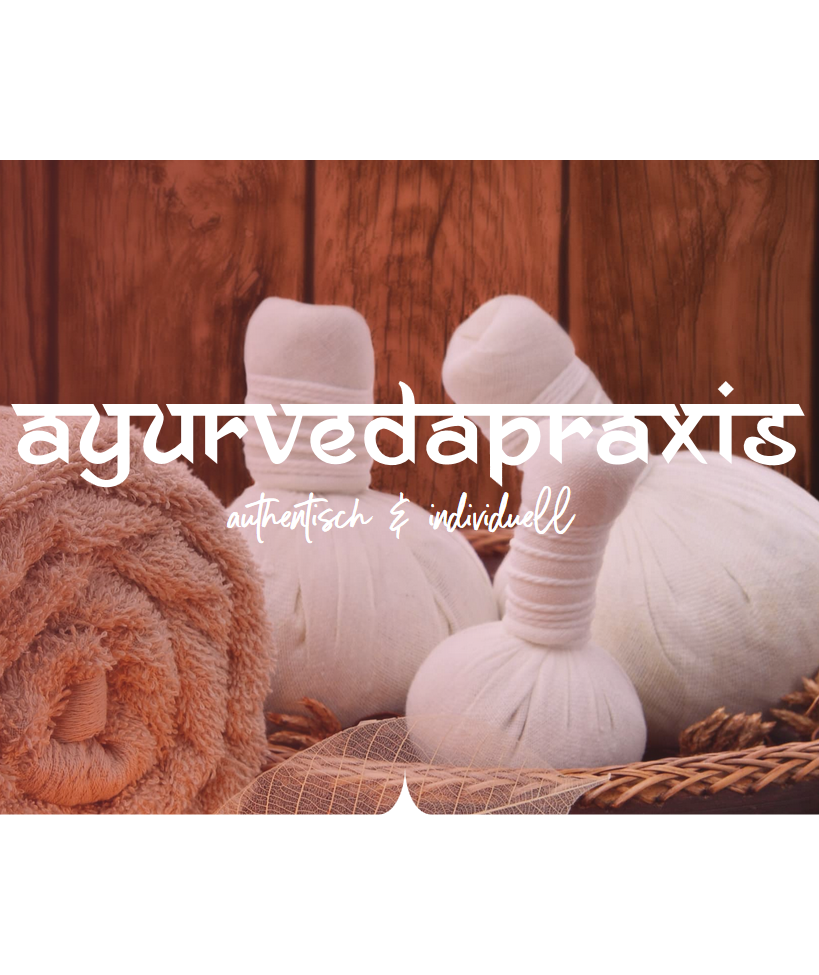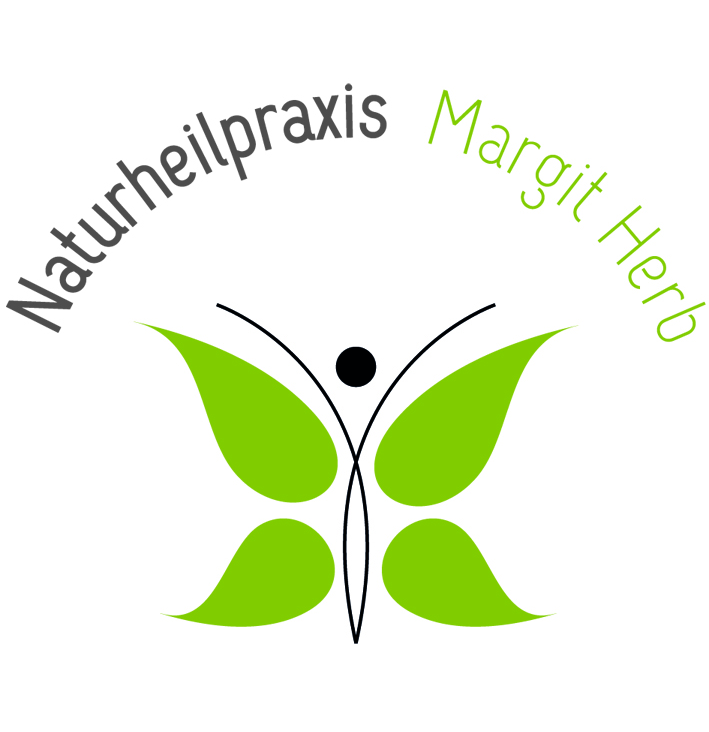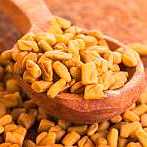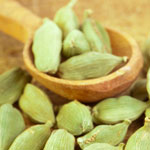Tomato, Potato, Eggplant, Bellpepper, Onion and Garlic: To Eat or Not?
09.11.2016 | Tomaten, Kartoffeln, Auberginen, Paprika, Zwiebeln und Knoblauch: essen oder nicht essen beziehungsweise wie oft essen? Vaidya Mishra erklärt als Ayurveda-Experte ausführlich und sehr fundiert auf Basis der ayurvedischen Grundsätzen, welche dieser Nahrungsmittel in unsere tägliche Diät einbezogen werden sollten und welche nicht. Besonders wenn sie nicht in der Charak Samhita erwähnt werden. Artikel in Englisch. Von Vaidya Mishra.
How do I, as an ayurvedic expert, determine on ayurvedic grounds, which foods to include and which to avoid in our daily diet, specially when they are not mentioned in the Charak Samhita?
More than anything else, health is all about what you eat. And don’t eat. Particularly in SV Ayurveda. I receive a lot of questions about new food trends, such as the superfoods: Goji berries; Chia seeds; Flax seeds; Kombucha. But I also repeatedly get questions about what I tell people not to eat: the infamous 4 members of the nightshade family – tomatoes, potatoes, eggplant, and bell-pepper; and onion and garlic. There seems to be growing confusion about whether or not these are good for you. Whether they should be consumed, a little, or not at all. The situation gets a little trickier because the main sourcebook of Ayurveda, the Charak Samhita, does not talk about all or some of these items, since they were not used or eaten in those days. For example, tomatoes. You probably know that tomatoes were introduced into modern culture only a few hundred years ago, and that at a very slow rate, since they were originally known to be toxic and non-edible. In my SVA linage, in Shaka Vansiya Ayurveda, I still strongly advise against consuming them even though they are an essential ingredient in every single cuisine of the world. They have also been adopted by Ayurveda – recipes and cookbooks casually call for the use of tomatoes.
On the other hand, there are some ingredients that are mentioned in the ancient ayurvedic texts, but are not meant for daily consumption. For example: onion and garlic. The chemical make-up of garlic and onion gives them great therapeutic properties for specific chronic conditions. But they are not meant for daily use. I will further elaborate on how and why, on solid ayurvedic grounds.
Ayurveda gives us tremendous tools for understanding the impact that food, and food ingredients can have on our physiology, through the study of their properties. This is not about nutritional content etc, it’s about the:
- rasa – therapeutic properties through taste;
- guna – effect in the stomach;
- virya – impact on the liver;
- vipak – post-digestive effect after it gets absorbed in the colon; and
- prabhava – ultimate effect on the mind/body complex – includes all aspects of health beyond the physical, but that operate from the physical level. The prabhava of a plant is what is felt on the subtle body/mind complex, but it emerges from the actual physical properties and make-up of the plant.
In Ayurveda, because of this in-depth understanding of a dravya or raw material, even toxic ingredients can be processed through the protocols of cleansing, called Nirmali karan, and the protocol of making an item into a rejuvenative product, or Amriti karan. But it is important to be able to identify the properties, specially if they are not found in the classical texts. But Ayurveda makes provisions for that. Ayurveda remains pertinent to us today, even though we are so far removed from it not only chronologically, but historically and culturally. Ayurvedic principles adapt to changing times even as life evolves, because its basic underlying principles are universal. As the ex
A knowledgeable vaidya knows how to discover and determine the gunas, or properties, of new ingredients, in order to decide whether an item is healthy for consumption or not. A few centuries ago, Bhav Mishra was one such scholar of Ayurveda. His book, the Bhava Prakash, is part of the minor canon of ayurvedic texts. He helped adopt and identify many new dravyas or ingredients into Ayurveda, that only existed in foreign lands. Another more recent eminent scholar of Ayurveda, P.V. Sharma, created new verses, in Sanskrit, to list the properties of new ingredients or dravyas not found in the ayurvedic pharmacopeia. A good example for this is the plant Digitalis purpurea L., used for heart disease. It has come to be known as “hrit patri.” It was adopted by Bhav Mishra – he talks about it in his Bhava Prakash Nighantu (materia medica) part 1 – page 825, (published by chokamba).
In his Dravyaguna Vigyan, part 2, PV Sharma (published by Chokamba – 1952), we find on pages 203-206, further elaborations on the Digitalis plant.
Another dravya new to Ayurveda was Marshmallow root also adopted by Bhav Mishra. Bhav Mishra identifies the plants guna-s or properties, determining it to be safe and effective for ayurvedic use. P.V. Sharma further elaborates upon the Marshmallow root, Althaea officinalis. Marshmallow root is now called “khatmi.” P.V. Sharma completes the work started by Bhav Mishra, but adding a verse on “khatmi:”
Did you know that even licorice, highly used in Ayurveda, is not indigenous to India? It was adopted from “foreign land.” It appears in the Charak Samhita and is identified as having come from foreign land. Bhav Mishra elaborates on it further. In the Bhav Prakash Nighantu, page 65, Bhav Mishra uses the word “klitakam” for licorice – something that came from out-of-the-country.
Studying foreign plants in order to determine whether they should be adopted or not is not a new prarctice in Ayurveda. But we should study them. We do not simply adopt them. We need to determine the properties of the dravya, to understand whether they will be safe and beneficial, or toxic for consumption. In addition, whether they are approved for daily consumption. Or only for thereapeutic medicinal use. And this point is crucial. Lack of discrimination in this context is what has led us to adopt ingredients only meant for therapeutic use, as daily edible ingredients. For example, garlic. But more about this later. Let’s look at this very important distinction first: ahar, or food, vs aushadhi or medicinal?
Ahar Dravya versus Aushadhi Dravya
In Ayurveda, we classify dravyas or materials, as ‘ahar dravya’ or ‘aushadhi dravya’. Ahar dravya is what constitutes our daily food: rice, lentils, vegetables, fruits, milk, ghee, etc. Things we need to consume on a daily ongoing basis for nourishment.
Aushadhi ahar, or aushadhi dravya, on the other hand, is medicinal food. These are foods used only on occasion for therapeutic purposes to correct imbalances or nourish in specific ways. This is the point that I try to make to people all the time: the nightshade vegetables fall in this category. Yes, it is true that scientific research has isolated active ingredients that are health promoting. However, this is not sufficient, because they carry other properties that are toxic. For example, Curaderm is a brand name cream with claims to heal non-melanoma type skin cancers. The active ingredient in this cream is reported to have been extracted from the eggplant. Another example: the antioxidant activity of lycopene – found in tomatoes – and its use in cancer prevention and cardiovascular disease, have been widely documented. But this does not mean that we should consume them daily. Even at all. Let me explain why.
Let’s look further into this category of aushadhi vs ahar dravya-s or materials. Ahar itself also carries 2 sub-categories: 1) pure ahar or food; and 2) medicinal diet or aushadhiya ahar. In this categories, for example, you will find the spices. Or onion and garlic also fall under this category – more about these ingredients further down in this article.
How do you determine which material falls under which category? The catgorization for food is based primarily on the rasa property, or the property of taste, for food. Food heals through the 6 tastes. This is how you determine if a dravya should be a daily dravya or not.
Dravyas whose action is based on the remaining properties, guna, virya, vipak, prabhava, are known to be aushadhi dravyas, or therapeutic materials. Not to be consumed daily.
The Deadly Nightshades
My SVA lineage never strayed from the teachings of the Charak Samhita. This is our reference manual. Some of my patients and colleagues have pointed out that the nightshades (with the exception of the eggplant) were ‘imported’ from the Western world and were unknown to Charak, therefore they should be ok to use. So why is it that SVA recommends against eating them on a regular basis when they are not even found in the original texts? More importantly, how do we know to avoid them?
As I explained above, even though the Charak Samhita may not list them, the text nevertheless gives us the basic foundations and tools to understand any dravya (substance) no matter where it is from. The Charak Samhita also teaches us how to evaluate and determine the properties of new items, and their bio-chemical effects on our body, helping us determine whether we should consume them regularly, as food items, or occasionally as medicine, or not at all – unless they undergo processes of transformation.
Modern science proves the wisdom of the Charak Samhita, as well as other ayurvedic shastras. Even though it comes at it from a different angle. It is scientifically known that these plants from the nightshade family contain many neuro-toxins: nicotine, atropine, solanine, scopolamine, amongst others. What do these substances do? For one, they are addictive. But they also carry another property which makes them even more toxic: they travel very quickly in the body, finding short cuts where needed, in order to bypass the body’s normal metabolic pathways. In other terms, these toxic plants and fruits spread their toxicity even quicker all over the body.
When talking about the nightshade family members (specifically: eggplant, bell-pepper, potato, and tomato) we highlight two significant prabhavas (specific actions/effects) of the nightshades plant members: Vyavāhī and Vikāsī. These prabhavas, or properties, are also carried by dravya-s that also have nicotine, and similar chemicals. Such as tobacco. Or opiates. Here, pay attention, we are reversing the formula and going Science to Sutra, to help us determine the edibility of ingredients uncategorized by the Charak Samhita. Let’s look at the first prabhava according to the Adarsh Nighantuh, where Bapa Lal talks about bhang (cannabis) – incidentally, tobacco is also a nightshade and carries this prabhava as well.
व्यवायी
vyavāyī
पूवर्ं व्याप्यािखलं कायं ततः पाकं च गच्छित।
व्यवािय तद् यथा भंगा फेनं चािहसमुद्भवम्॥
िन. आ.
pūrvaṁ vyāpyākhilaṁ kāyaṁ tataḥ pākaṁ ca gacchati|
vyavāyi tad yathā bhaṁgā phenaṁ cāhisamudbhavam||
To paraphrase, this means the drugs which get absorbed immediately even before going through the digestion process, and only undergo digestion during their circulation in the body, these are called vyavayi. They are predominantly made up of vayu and akash mahabhuta. Vayu produces the motion and akash keeps the capillaries (srotas) open. Example: morphine, bhang (cannabis), and other purely poisonous toxic dravyas. These drugs have a micro-molecular make-up, and thus are very easily dispersible, they do not have to undergo natural stages of digestion, absorption, spread and excretion. From the SVA perspective, the chemical constituents of some of the members of the nightshade family, namely: eggplant, bell-pepper, potato, and tomato, also carry this vyavayi prabhava. They immediately go to the nadis or vibrational channels, disturb these nadis, and through these vibrational channels deliver poison to the entire physiology very rapidly.
In the following verse, the Sarangadhara Samhita (1200-1500 AD), one of the three supplemental classical books on Ayurveda – next to the Ashtanga Samgraha and the Madhava Nidanam – describes the vikāsī prabhava exhibited by the members of the nightshade class:
िवकासी
vikāsī
िवकासी िवकसन्नेव धातुबन्धान् व्मोक्षयेत्।
सिन्धबन्धाँश्च िशिथलान् करोित िह िवकािस तत्।
िविश्लष्यौजश्च धातुभ्यो यथा क्रमुककोद्रवौ॥
शा.
vikāsī vikasanneva dhātubandhān vmokṣayet|
sandhibandhā
The first line says that vikāsī dravyas dilate the dhātubandhān – the gaps between the tissues.
The second line says that vikāsī makes the joints weak – loosens the grip of the joints.
The third line says that it takes away (destroys) the ojas from the dhatus or bodily tissues. In this context, the Sarangadhara text is referring to a grain called kodrav, that carries this effect.
Vikasi drugs spread very rapidly into the body and destroy ojas. They also over-dilate the nadis, vibrational channels, and impact the nerves – their first victim. Our nerves act as a bridge between the nadis and the body. All tissues and joint movements get sluggish. These drugs are predominant in vayu mahabhuta. Example: areca nut, or intoxication brought about by tobacco is due to their vikasi action.
You probably already know that a great deal of research has been carried out on the effects of nightshade vegetables on joint pain and muscle inflammation. One good article is: Inflammatory Foods: Nightshades. I encourage any sceptics on the toxicity of nightshades to do some research on the topic, easily accessible on the web.
Dr. Lisa Raskin, one of my best SVA expert practitioners, has done a lot of research on nightshades. You may view her entire YouTube video on this topic Dr. Lisa Raskin Research on Nightshades. Here are a few highlights from her video:
- Nightshades constitute a very large family of plants containing about 2000 species. The main common factor uniting all these species is a type of chemical compound called alkaloid. There is one type of alkaloid that causes the most trouble and that is called Solanine. Solanine is a neurotoxin. Nightshades contain at least 6 OTHER neurotoxins, including atropine and nicotine.
- The next great neurotoxin in the nightshades is atropine, a blocker preventing nerve transmission.
- Alkaloids that are found in nightshades help protect the plants from insects, so you understand how these alkaloids primary function is to serve as a pesticide – did you know that some potatoes are actually bred just to make pesticides…. they are dehydrated and pulverized into dust and spread over plants.
- Eggplant has a long history of being identified as a toxic plant. A few spoonfuls of eggplant contain the same amount of nicotine you would inhale if you were sitting in a closed room with a light smoker for three hours!
- It has also been found that solanine can cause joint damage and inflammation. Many people experience stiff joints, painful wrists, ankles and knees when regularly consuming nightshades. Researchers think that these nightshades cause excessive loss of Calcium from the bone and excessive deposits of calcium into soft tissue.
I was a great lover of nightshades myself. When I was growing up, my father was very strict with my diet. No nightshades were allowed in my mother’s cooking. However, I discovered them later as a student living away from home. And I also got addicted to them! I had to wean myself off of them when my father reminded me. Point is, I don’t want you to think that I am telling you not to eat them because of a personal distaste. On the contrary; but I know what they do to your body. So it is really not worth jeopardizing your health and mental peace. You can skip the eggplant parmiginia, and the tomato paste pizza.
About Garlic and Onion
In the Vishnu Purana and Shiva Purana, ancient classical narrative texts, we read of allegorical stories depicting the genesis of life on earth. For example, the emergence of garlic on earth. It is told, that garlic emerged after the churning of the ocean. Tradition has it that when Lord Vishnu, in his Mohini (female) form, was distributing the nectar of immortality (amrita) to the gods, a demon in diguise snuck into the line-up. By the time Mohini realized a demon was hiding under the hooded cloak, the demon had already received his share of the amrit in his mouth. The Sun and the Moon, witnessing this event, prompted Mohini to hasten and behead the demon lest he attain immortality. The nectar of immortality had not been swallowed, and was still in his throat, when Mohini cut off his head in one blow. The demon Rahu’s blood mixed with the amrit stuck in his throat trickled down and fell on the earth. Upon touching the earth, a plant sprouted: it was garlic. That is why garlic is said to have countless life-supporting and healing properties in addition to being “tamasic” – toxic for the mind and spiritual health. This allegorical story is meant to illustrate why garlic should be used not as an ahar dravya, a daily food item for daily consumption, but as an aushadhi dravya, to consume only when needed in medicinal doses. And this is what the ayurvedic shastras recommend: where other dravyas fail, even in great quantities, garlic, even in small quantities, works as a highly effective medicine, as for example, in the case of some infectious conditions; or for joint and rhumatic conditions. In my lineage, we discuss this at greater length by looking at the chemical make-up of garlic: it contains high levels of sulphur – useful as an antibiotic.
My father, Vaidya Kameshwar Mishra, used to repeat, over and over and over again that our gut is our primary locus of health. All that you eat gets absorbed and delivered through your gut, where your friendly bacteria are hard at work making this absorption happen. Colonies of friendly bacteria need to be maintained. The balance is precarious. Their population grows or shrinks depending on what you are consuming, as well as other stressors that can impact your overall health. In this context, Sulphur, is not a great friend of the friendly bacteria in our gut, because it does not discriminate. Sulphur is not only effective to eradicate infectuous bacteria, but it also kills our friendly bacteria. We need friendly bacteria for our immunity and for mineral absorption in the colon. One of my father’s favorite SVA sayings was:
This means: “the brain of the brain resides in the gut” – to express his conviction of the vital role that friendly bacteria play for our total health. About 50 years ago, this was confirmd by modern science. More recently, there has been a great emphasis on consuming friendly bacteria, even in capsule form, for overall health. I have also written about this at length on my blog and why it is not ideal. But to get back to our topic at hand: friendly bacteria (yoginis) manufacture in the colon most of the neuro-transmitters necessary for our brain functions. This is one of the reasons why, in SVA, garlic and onion are NOT consumed as part of our daily regular meals, because they are known to harm the colonies of friendly bacteria in our gut.
We do also find other textual references on the origin of garlic from the Gadanigraha Khanda Nighantuh, also exemplifying through metaphorical terms how garlic is a “mixed” dravya, and therefore not for daily consumption:
लशुनकल्कं
laśunakalkaṁ
राहोः अच्युतचक्रेणलूनाद् ये पितता गलात्।
अमृतस्य कणा भूमौ ते रसोनत्वमागताः॥
॥ गदिनग्रह खण्ड २॥
rāhoḥ acyutacakreṇalūnād ye patitā galāt|
amṛtasya kaṇā bhūmau te rasonatvamāgatāḥ||
|| gadanigraha khaṇḍa 2||
rāhoḥ: garlic
acyutacakreṇalūnād: Vishnu’s chakra severed the head
amṛtasya: amrita (nectar)
kaṇā: molecule (drop)
bhūmau: earth
rasonatvamāgatāḥ: rasona (garlic) fell
Along with garlic, onion is also not good to consume regularly. Onion carries properties similar to that of onion. Not considered an edible item for daily use. But rather to be used as an aushadhi dravya – a therapeutic medicine ingredient.
Onions (Palāṇḍu)
Palāṇḍu is the Sanskrit name for onion. The verse below is from Bhava Prakash. In line two of the verse he says that “All persons full of wisdom say/know that onion has the same properties as garlic.”
पलाण्डु (प्याज)
palāṇḍu (pyāja)
पलाण्डुयर्वनेष्टश्च दुगर्न्धो मुखदूषकः।
पलाण्डुस्तु बुधैज्ञेर्यो रसोनसदृशो गुणैः॥
भा. प्र. िन. हरीतक्यािदवगर्॥ २२६॥
palāṇḍuryavaneṣṭaśca durgandho mukhadūṣakaḥ|
palāṇḍustu budhairjñeyo rasonasadṛśo guṇaiḥ||
bhā. pra. ni. harītakyādivarga || 226||
palandu: onion
vanestasca: 2 kinds of onion, one is domestic, the other grows wild
durgandho: carries strong foul smell
mukhadusakah: it particularly pollutes(imbalances) the oral cavity
palandustu: that onion
budhairjneyo: the one who has wisdom
rasona: garlic (like)
sadrso: equal
gunaih: properties
Much like garlic, onions also carry a high sulphur content – you can tell from their smell . In my SVA lineage, we place just as much emphasis on addressing and treating the vibrational body as much as we do the physical body. We say that our food and the environment are made up of dual primary vibrations: asura and sura. Sura means all that is life-supportive and life-promoting. It is equated with godly attributes. Asura means all that resists the growth and development of life and is therefore considered, to use metaphorical terms, destructive or demonic! Sura is when all vibrations flow and progress in the direction of more life, more bliss, and more peace. When all is all good, constructive and nurturing, it is sura. While an a-sura vibration, literally a vibration that is missing harmony, is known to be destructive and to promote distress, despair, destruction. Asura vibrations are considered rajasic or tamasic based on their intensity. Coming back to garlic and onion, these are categorized also as tamasic and rajasic. When ingested regularly and not for medicinal purposes, they infuse the mind and behaviour with rajasic and tamasic properties. In SVA terms, they shut down the “vibrational heart lotus.” What does this mean? It means that some people will feel depressed/sad for no reason; or they will harbor feelings and thoughts of ill-will, or jealousy, anger, or anguish. Things will seem grim and the heart will feel despondent. When the heart lotus shuts down, it hinders the original blissfull light to en-lighten the mind, the sattva cannot send its guidance to the mind. In ayurvedic terms, frequent garlic and onion consumption leads to ignorance, lethargy, anger, aggression, over stimulation of the senses, increase in sexual desire and anxiety, and overall aggressivity.
And the regular daily consumption of these 4 members of the night-shade family will further aggravate our state of dis-ease – inflamming our joints, slowing down and clogging our circulation, and causing vibrational irreversible damage on our subtler body.
The greatest gift Ayurveda gives us is the power to be masters of our own lives and health. Ayurveda teaches us to be independent by giving us the blueprint for Nature’s laws of functioning in our own bodies, so that when we are faced with new situations and conditions never before encountered, we will still know what to do and come out victorious, stay happy, and always prosper. Here’s to discovering more of life with Ayurveda, and through SV Ayurveda teachings. Thank you!
Chandi LLC/ Vaidya R.K. Mishra

Chandi LLC/ Vaidya R.K. Mishra
9620 Topanga Canyon Place
91311 Chatsworth, California
USA
Kontaktperson:
Educator for Chandi LLC Vaidya Mishra
Telefon: 001 - 818 - 709 - 1005
Email: info@prana-center.com
Website: www.vaidyamishra.com
Dieser Artikel erschien am 14.10.2016 hier: https://www.svayurveda.com/tomato-potato-eggplant-bellpper-onion-garlic-eat/ und wurde mit freundlicher Genehmigung von Vaidya Mishra im ayurveda-portal.de veröffentlicht.






.png)



